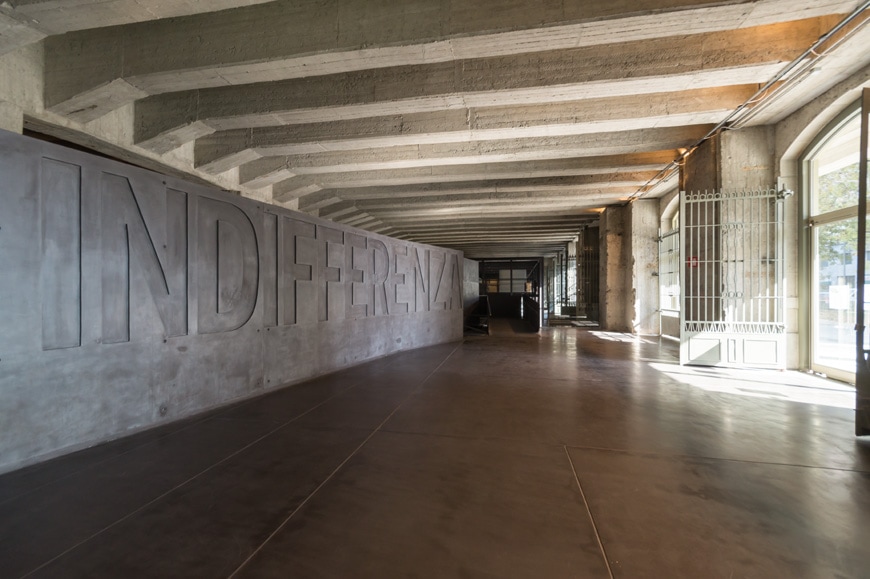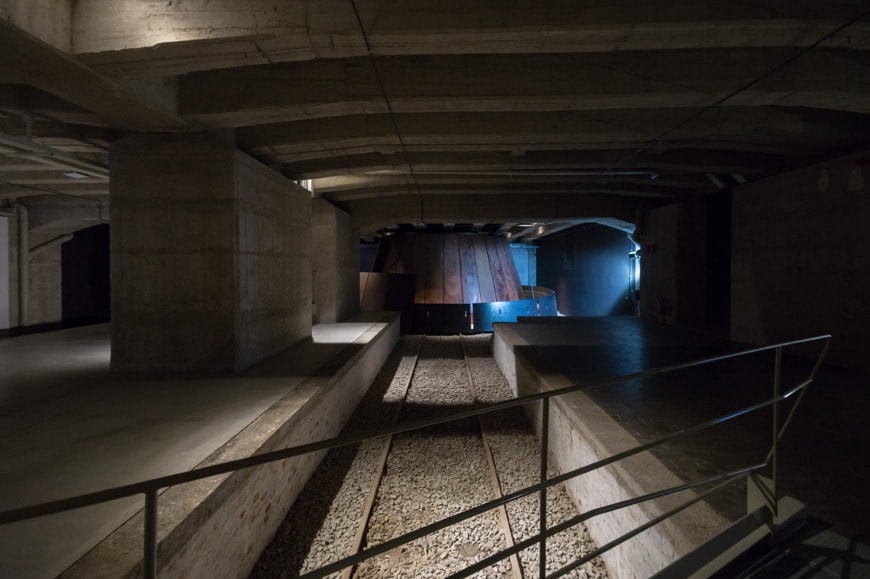Shoah Memorial Milan – Morpurgo de Curtis
Tel.: +39 022820975 email: prenotazioni@memorialeshoah.it
https://www.memorialeshoah.it/?lang=en
Open daily except Fridays
The Shoah Memorial of Milan is a Holocaust site of memory dedicated to those who were deported from the city of Milan to the Nazi death camps during World War Two.
Between 1943 and 1945, thousands of prisoners, mostly Jews, were amassed on livestock carriages that left from platform 21 of the Central Station of Milan (Stazione Centrale di Milano) for Auschwitz-Birkenau and other extermination camps. Of the 774 Jews who were deported to Auschwitz-Birkenau in December 1943 and January 1944, only 27 survived the camp.
To manage the deportation with ghastly efficiency, the Gestapo and the Fascist collaborationist government built up a true “deportation machine” in the bowels of the Milan Central Station.
There, in an underground mail loading area concealed from public view, the deportees were crammed in narrow wooden railcars.
Then, one by one, the cars were lifted by an elevator up to the rail tracks level, where the “special trains” were assembled and bound for the camps.
An interior view of the Shoah Memorial of Milan; photo Riccardo Bianchini / Inexhibit
Designed by Morpurgo de Curtis Architects and inaugurated in 2013, the Shoah Memorial of Milan originates from the transformation of that 7000-square meter area in the basement of the Stazione Centrale. Along with a permanent exhibition gallery, the memorial includes a 200-seat auditorium, a library, and a documentation center.
The facade of the memorial on the Piazza Edmond J. Safra; photo Riccardo Bianchini / Inexhibit
Visiting the memorial
A concrete wall carved with the word INDIFFERENZA (indifference) opens the memorial exhibition; in one of the videos available in the memorial, senator for Life and Holocaust survivor Liliana Segre explains its meaning.
With, she recounts how, while she and the other deportees were moved from the San Vittore prison to the Stazione Centrale, he saw no signs of compassion from the Milanese citizens, who seemed to ignore them. The only gestures of solidarity – an apple, a word of consolation – had come from the prison inmates. It was that indifference that made the Holocaust possible, or at least that contributed to making it possible, indeed.
The concrete wall with the word “INDIFFERENZA” past the entrance of the memorial; photo Riccardo Bianchini / Inexhibit
Segre’s video is one of the many testimonies that form the central part of the permanent exhibition. Here, large black-and-white photo portraits and bios of Holocaust survivors combined with video interviews are shown in several small “Rooms of Testimony” made of black steel.
A sequence of description panels describes the history of the site and the details of the deportation of Jews, “inferior people”, and political dissidents from Italy to concentration and death camps.
Walking through the exhibition, the sense of apprehension is amplified by a rumbling sound that, cyclically, vibrates through the memorial walls and floors. It’s not a multimedia effect, the noise is produced by the trains running above our heads and remembers us that, as much today as in the 1940s, we are in the belly of one of the busiest railway stations in Europe.
The gallery of portraits and the “Rooms of Testimony” where video interviews with survivors are shown, photos Riccardo Bianchini / Inexhibit
Two of the original twenty-four tracks are located in the inner part of the memorial; they are the most direct testimonies of the events which took place here.
On the first track, there is the reconstruction of one death train; composed of original livestock cars once used to transport the deportees; standing silent, it remembers us that forgetting is not possible. On one end of the track, Morpurgo de Curtis installed a “place of reflection”, a circular structure accessible through a spiral ramp whose dim-lighted interior accommodates only a curved bench and an oculus in the ceiling casting a narrow light beam onto the floor.
The death train reconstruction; photos Riccardo Bianchini / Inexhibit
Exterior and interior views of the “Place of Reflection”; photos Riccardo Bianchini / Inexhibit
The second track is rather crude and speaks for itself. The only exhibits here are a simple video projected on the platform back wall which lists the names of the 774 Jews deported to the Auschwitz-Birkenau camp, from which those of the only 24 survivors are dramatically highlighted, and twenty memorial stones reporting the dates and destinations of the death trains departed from the Binario 21 track.
At the end of the track, there is the elevator shaft, through which the mail wagons were lifted into the departure yard, in which an old placard reading “Vietato Trasporto Persone” (No People Allowed) stands out with tragic brutality.
The last track of the memorial with the “Wall of Names”, reporting the names of 774 Jews deported to the Auschwitz-Birkenau death camp between December 1943 and January 1944, and the railcar elevator shaft with the “No People Allowed” placard; photos by Riccardo Bianchini / Inexhibit
The permanent exhibition of the Holocaust Memorial of Milan does not pretend to comprehensively present the Shoah from a historical point of view; it is rather conceived to testify the events that happened here and near here, together with the experiences of those who were forced to pass through in this place during the Nazi-Fascist persecution, at the same time projecting the significance and the implications of those facts into the present.
copyright Inexhibit 2024 - ISSN: 2283-5474
















